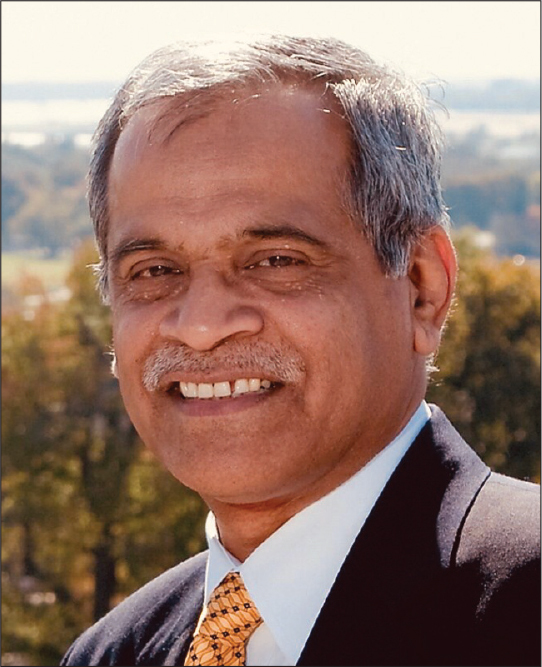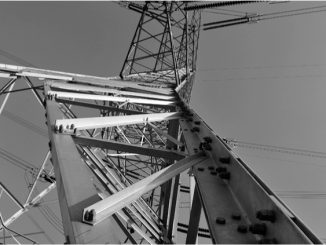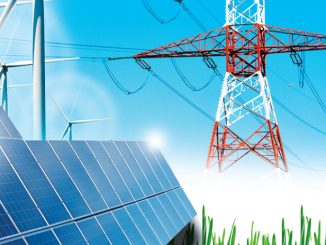 With the Indian electricity grid becoming increasingly complex, grid operation and transmission planning will evolve significantly over the next 25 years, believes S.K. Soonee, adviser, Power System Operation Corporation Limited (POSOCO). There will be a greater focus on resource adequacy, flexibility and cybersecurity. In an interview with Power Line, Soonee spoke about the changes in grid operations, the key challenges and future outlook. Excerpts…
With the Indian electricity grid becoming increasingly complex, grid operation and transmission planning will evolve significantly over the next 25 years, believes S.K. Soonee, adviser, Power System Operation Corporation Limited (POSOCO). There will be a greater focus on resource adequacy, flexibility and cybersecurity. In an interview with Power Line, Soonee spoke about the changes in grid operations, the key challenges and future outlook. Excerpts…
When you look at the past 25 years, what gives you the most satisfaction?
As a system operator for the past four decades, a robust, all-India synchronous grid is a dream come true. This is something that India can take pride in. The second achievement is the improvement in access to electricity. Today, electricity has reached every nook and corner of the country. The third achievement is that we could add a large capacity of 100 GW. The fourth one is the development of an all-India power market, in which anybody can buy and sell power from anywhere in the country in 15 minutes. This is a very important part of market development, which is now taking place in India. India has put in place systems and processes that can be scaled up and we also have a robust settlement system, which is an important part of the market.
What are the big changes that the power sector will see in the next 25 years?
Peeping into the future is a very dicey thing, but let us extrapolate some trends. So, the first thing that is imminent is deep decarbonisation. It is not something that will happen in a decade or so. So, certainly for the next 25 years, all of us would be working on decarbonisation, which is part of a much bigger subject – climate change.
The second thing is consumer participation. Today, consumers have become prosumers. How they will behave in the next 25 years is something that has to be seen, because our experience of 100 years is from the supply side and the consumer has always drawn power. But now the consumers’ role is changing. Further, we will have more new actors in the arena – storage, aggregators and new technologies like hydrogen and offshore wind.
The Indian grid will expand significantly in the next 25 years. Although cross-border grid expansion depends on geopolitical circumstances, it will only move forward, the way Bhutan and Bangladesh have been connected to the Indian grid. We will have more such synchronous connections. Further, market products will keep on refining and come in various avatars. It is difficult to innovate in physical systems, but easier to create products in the market, particularly when consumers have become active (have become prosumers). The present market is very niche, but once the consumer comes in, things will change dramatically.
Another change will be a decline in the dominance of the state’s role. Private sector participation has developed very well in generation as well as transmission, and will now evolve in distribution as well.
“We have to plan transmission expansion in a way that there is no acute congestion.”
What will be the biggest challenges for grid operation in the next 25 years?
The biggest challenge would be the changing resource mix. We were used to thermal power, which was a “tamed” generation source, but now we are getting into “wild” generation sources like wind and solar. With decentralised variable generation, the grid operator will have to unlearn what has been done for so many years and relearn the techniques of taming and handling renewables and new resources.
Another challenge will be maintaining resource adequacy. Since the demand profile will also change, we will have to ensure that our resources are economic, dependable as well as flexible. Just having the installed capacity does not help because we also need to ensure an adequate supply of resources like water and fuel. A culture of resource adequacy has to be inculcated. One has to meet the demand, keeping in mind various exigencies such as droughts (which impact hydropower), low wind speed and difficulties in the import of fuels.
Maintaining grid reliability and resilience is another challenge. Our predecessors saw no problem in some load shedding, but now the value of electricity is very high, nobody wants interruption and power must be restored expeditiously. Grid resilience is vital given the kind of extreme events that are taking place every now and then.
Further, we need to build a stronger communication backbone in the power sector, which is robust enough to handle cybersecurity and the amount of data which will be exchanged over the next 25 years. We need to have data streaming and backup of backup. We are improving in this area but these things get tested only during extreme events.
Also, going forward, the market will expand in many directions – up, down and lateral. A market expands upwards when neighbouring countries start participating aggressively in our power exchanges, downward expansion will happen when discoms, industries and prosumers start participating in the markets. However, the biggest challenges that would remain are the financial viability of the distribution segment and the quality of supply, which has an impact on grid operations too.
Further, the regulations have to become more stringent and compliance monitoring has to be stricter. It is essential to maintain discipline in all walks and not only grid security. Lastly, given our ageing workforce, attracting and retaining talent would be a challenge for quite some time.
“With decentralised variable generation, the grid operator will have to unlearn what has been done for so many years and relearn the techniques of handling renewables and new resources.”
How does transmission planning need to evolve?
Fortunately, India has got transmission right, notwithstanding what the critics say that we have overbuilt. I have always been a strong votary of transmission. It is a key infrastructure. Whether you talk of grid economy, reliability, resilience or renewable integration, transmission is a must. We have to plan transmission expansion in a way that there is no acute congestion. Today, we might be experiencing local surplus and shortages, but one can still trade power from anywhere. Had there been transmission congestion, the scenario would have been totally different and difficult. So, as a country, we must maintain a transmission network that is near-constraint-free.
The other aspect that needs attention is the development of intra-state transmission and sub-transmission systems. Of course, of late, transmission is being redefined, 33 kV is coming under transmission, so the wires business has to be taken seriously.
Further, there are certain institutional changes in transmission, which were conceived long back, but have now fructified. Earlier, the licensees were carrying out planning, which is now done by a separate agency. This makes a lot of difference. Conflict of interest has been removed. The central transmission utility must be built properly. It has to come up as a centre of excellence and a sustainable institution.
In addition, long-term, short-term and medium-term open access would be morphed and undergo a major change once we have the general network access. This would be a big change as far as transmission is concerned, including for those who want to secure access, for planners as well as grid operators. Private sector participation is already there in transmission and it will only pick up.
One debatable issue is, whether we should allow trading in transmission, FTR financial transmission rights, etc. I believe that we need to allow our grid to become mature as transmission is not a fungible commodity. It is not a divisible or transferrable commodity. Hence, trading of such a public service would not be very easy. India should stay clear from trading in transmission, at least for a couple of decades.
How will the role of grid operators evolve?
The grid will become much more complex. Grid operators will need all kinds of skill sets – legal, regulatory, economics, behavioural and commercial. POSOCO is still in its infancy – 10 years is a small number for an institution to build up in, but it has at least taken some shape. A similar institution has to be built in the states as well, both SLDCs and STUs, and it is a challenge.
With distribution becoming active due to the emergence of prosumers, we will need distribution system operators (DSOs). Currently, we have one National Load Despatch Center, five regional load despatch centres, and around 30 state load despatch centres. Going forward, we will probably have hundreds of DSOs, which will be the grid operator for last mile connectivity with rooftop solar and batteries.
The institution of grid operation in the country has been shallow so far. Shallow independent system operators (ISOs) do not carry out power system planning or transmission planning. Gradually, India is moving from shallow ISOs to deep ISOs, hence ISOs have to be deeply involved in transmission planning.
Further, it is crucial to have a robust settlement system. With respect to market trade, who will pay to whom and for what in a dispute-free fashion for every 15 minutes is a mammoth, gigantic task, though mostly underestimated and under-appreciated. India will probably need a settlement corporation in the power sector. The grid operator will have a massive finance department, a massive economics department and a massive legal department going forward.
So far, cross-border trade has taken place in a simple manner, mostly through government-to-government contracts with limited players. However, as neighbouring countries reform their systems and multiple players enter the market, grid operators will have to evolve accordingly. There is a need to set up a club of grid operators in the Indian subcontinent.
What skills will the next generation of load despatch operators need?
Grid operators will have to unlearn and relearn. Therefore, agility is an important attribute. Seasoned operators will have to become more adaptable. Grid operators not only need to know about electrical aspects, but legal, regulatory, economic, behavioural and commercial aspects as well. In addition, situational awareness is important – awareness about what is happening, why it is happening and what is likely to happen. The grid operator has to be prepared for these questions at all times and be ready for the next step, as the buck stops at the grid operator. The grid has to run in a secure manner as people have faith in the grid operators and have given them this responsibility, which must be discharged faithfully.
On the technology front, things are changing so fast that all of us are facing challenges. Today, there is a deluge of data. Grid operators need to learn about technologies for data processing, data archiving, data visualisation, artificial intelligence and neural networks, among others. The grid parameters are being measured continuously and large volumes of data are being generated, which have tremendous insights and wisdom that need to be extracted. This is another area where the skill-sets of grid operators need to evolve. All in all, it is a happening time for next-generation load despatchers in India.



